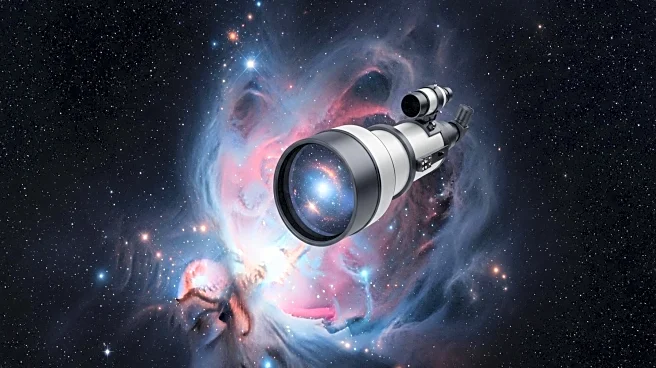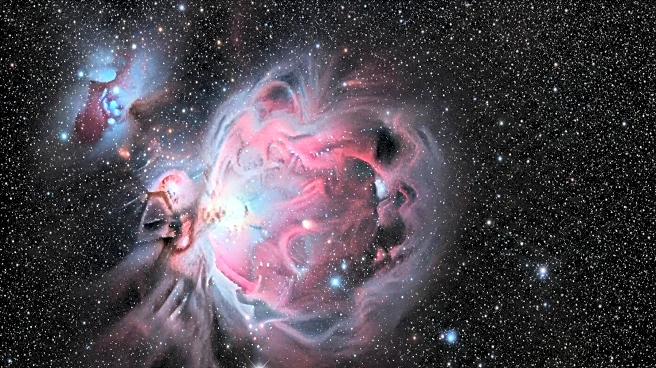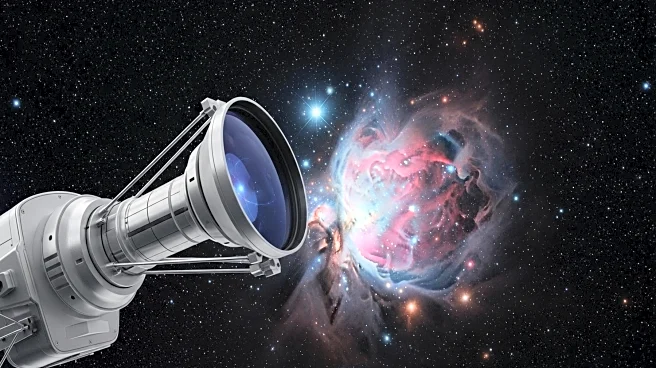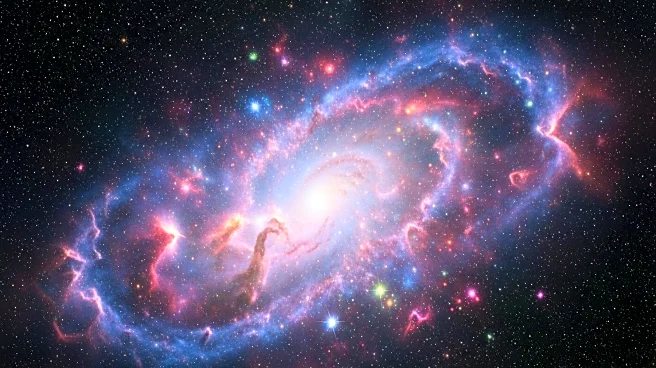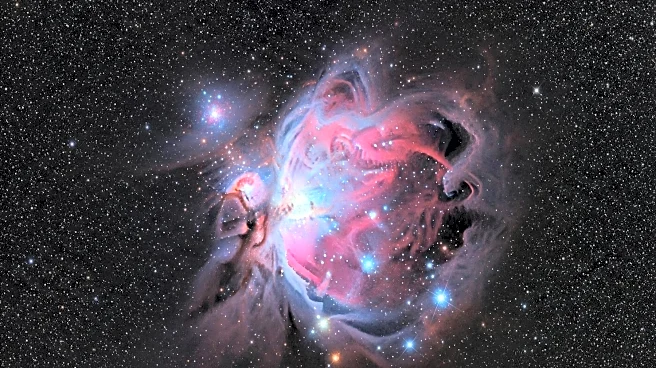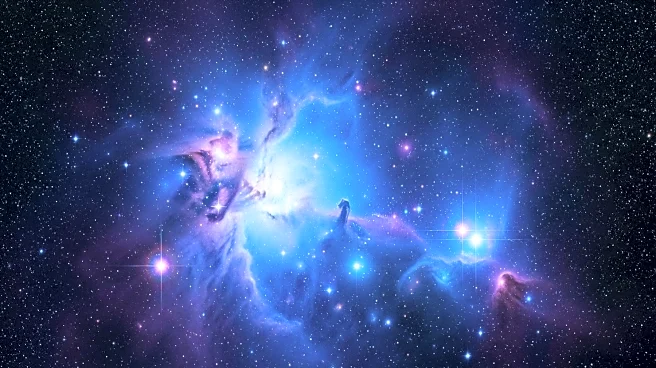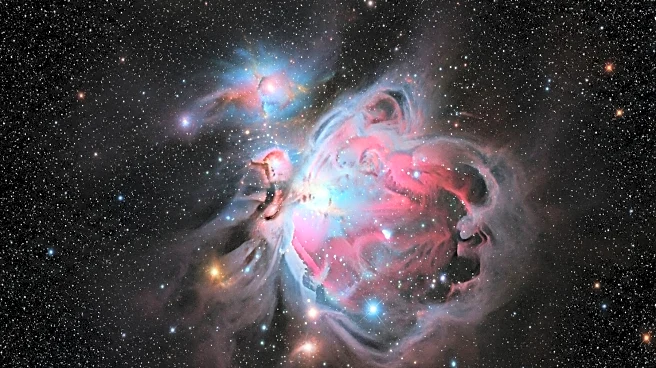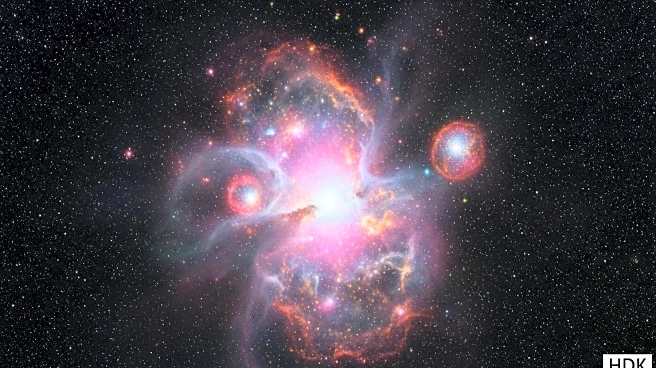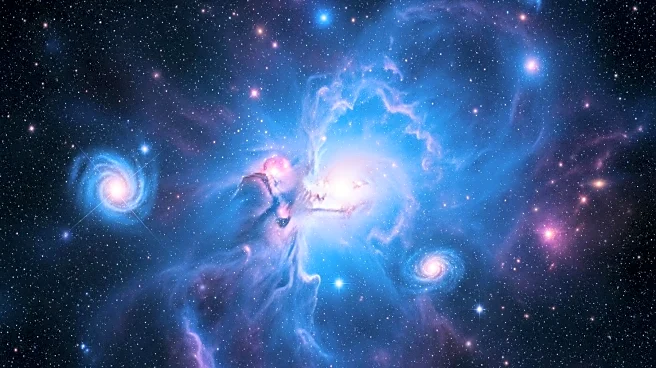What's Happening?
The James Webb Space Telescope (JWST) has captured a detailed image of Sagittarius B2, the most massive star-forming region in the Milky Way. Located near the galaxy's center, this region is characterized by glowing dust heated by young stars and dense clouds where future stars will form. The image, taken using Webb's mid-infrared camera, MIRI, provides unprecedented detail, allowing astronomers to better understand the processes of massive star formation. The findings highlight the unique activity of Sagittarius B2, which produces half of the new stars in the galactic center despite containing only 10% of the region's gas.
Why It's Important?
The detailed observations of Sagittarius B2 by the JWST are significant for understanding star formation processes in the Milky Way. This region's unique activity offers insights into the dynamics of star birth and the conditions that lead to such prolific star formation. The data could help refine models of stellar evolution and improve predictions about the lifecycle of stars. Additionally, the findings contribute to the broader understanding of galactic structures and the role of massive star-forming regions in shaping the galaxy.

